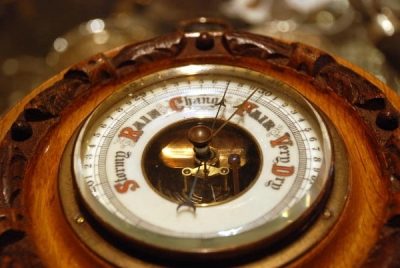
Television technology uses electric signals through cables or ultra-high frequency (UHF) radio waves to transmit pictures and sound to a television set, which acts as a receiver. The signals come into the television through a cable or an aerial. The picture signals are divided into three — one each for red, green and blue. In the television, there is an electron gun for each colour, which fires electron beams (also known as cathode rays) onto the screen. The screen is covered with chemicals called phosphors. The electron beams scan rapidly across the screen, causing tiny dots of phosphors to glow red, green and blue. Viewed with normal vision, from a distance, the dots blur into a full-colour picture.
Most people spend hours each day watching programming on their TV set, however, many people might wonder how in fact television works. There are many parts to this process and many technologies that are involved. Following are the most important processes and technologies involved in making television work.
Main Elements of the TV Process
There are many major elements that are required in order for TV to work. They usually include a video source, an audio source, a transmitter, a receiver, a display device, and a sound device.
Video Source
The video source is the image or program. It can be a TV show, news program, live feed or movie. Usually the video source has already been recorded by a camera.How TV Works?
Audio Source
Besides the video source, we also need the audio source. Practically all movies, TV shows and news programs have some sought of audio. Audio source can be in the form of mono, stereo or digitally processed to be later played back with surround sound.
Transmitter
The transmitter is necessary for broadcast television companies that broadcast a free signal to viewers in their area. The transmitter transmits both the video and audio signals over the air waves. Both audio and video signals are electrical in nature and are transformed into radio waves which can then be picked up by receivers (your TV set). A transmitter not only transmits one channels audio or video signal, but in most cases many different channels.
Receiver (TV set)
A receiver is usually integrated in your TV set and this receiver is able to grab radio waves (the transmitted signal) and process these radio waves back to audio and video electric signals that can now be played on your TV set.
Display Device
A display device is usually a TV set, but can also be just a monitor. The display device is able to receive electrical signals (usually sent from the receiver) and turn these electrical signals to a viewable image. Most standard TV sets incorporate a cathode ray tube (CRT), however new display devices can include LCD (liquid crystal display) and Plasma (gas charged display) display devices among others.
Sound Device
While most sound devices are built into your TV set in the form of speakers. Audio signals are obviously needed to match up with the video being shown to the viewer. Many newer TV sets have outputs to send the TV sound to high quality speakers that reproduce sound much better. Since audio signals can include surround sound technology, the TV set is able to send audio signals to the proper speakers located around your room.
Picture Credit : Google











